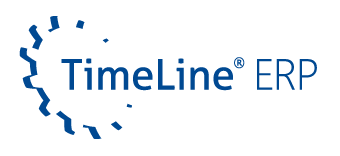Why Manufacturers Are Replacing Excel with ERP for Production Planning and Control
Manufacturers worldwide are moving away from Excel and embracing ERP for production control. With increasing operations complexity, traditional spreadsheets fall short in accuracy, scalability, and real-time insights. Enter ERP software for manufacturing—a digital transformation tool designed to optimize everything from planning to shop floor execution.
This article explores the benefits of switching from Excel to ERP, highlights how production planning ERP improves workflow, and why ERP vs Excel isn’t even a fair fight anymore.
The Limitations of Excel in Production Planning
- Excel Limitations in Production Planning
Excel is a static, manual tool that lacks automation. It can’t support real-time decision-making, especially in high-volume manufacturing environments. Errors in formulas or outdated files can lead to missed production targets and costly rework. - Data Silos and No Real-Time Visibility
Excel documents often remain stuck on individual computers or shared folders, causing communication breakdowns. In contrast, cloud-based ERP solutions offer centralized, accessible data with real-time visibility. - No Shop Floor Automation
Modern manufacturing requires dynamic scheduling, shop floor integration, and machine data—none of which Excel can provide.
ERP: The Future of Production Control
- Centralized Manufacturing ERP System
With a manufacturing ERP system, all departments—from production to finance—operate on the same data platform. This ensures smooth inventory and production sync. - Real-Time Production Tracking
ERP systems offer dashboards and alerts that show live production status, helping managers identify bottlenecks and react quickly. - Data Accuracy in ERP
By removing manual entry and adding validation logic, data accuracy in ERP is far superior to spreadsheets. - ERP Implementation for Manufacturers
Modern ERP systems are tailored for specific industries. Whether you’re in auto components, plastics, or casting, you can find a solution that matches your workflow.
Benefits of ERP Over Excel for Production
- Reduced human errors and rework
- Improved production scheduling software capabilities
- Automated reorder levels for inventory
- Enhanced digital transformation in Manufacturing
- Seamless shop floor automation and integration
Real-World Case: Replacing Spreadsheets with ERP System
One metal parts manufacturer in Gujarat was struggling with Excel-based tracking. Delayed deliveries, overstocked materials, and poor scheduling were common issues. After moving to a cloud-based ERP solution, they saw:
- 30% increase in production control accuracy
- 50% improvement in real-time production tracking
- Full inventory and production sync across departments
ERP vs Excel: Key Differences
Excel lacks real-time data, production planning tools, and automation. In contrast, ERP software for manufacturing offers real-time production tracking, built-in production planning ERP modules, and full shop floor automation. With better data accuracy and support for digital transformation in manufacturing, ERP clearly outperforms Excel in every critical area.
Conclusion
The debate between ERP vs Excel is over. Manufacturers aiming for scalability, speed, and accuracy are turning to ERP for production control. Whether it’s managing shop floor tasks, automating production schedules, or enabling real-time data in ERP for manufacturing—the benefits are undeniable.
It’s time to leave behind static spreadsheets and embrace the future with a fully integrated, cloud-based ERP solution. The choice is simple—and it starts with implementation.
FAQs
Q1. Why should manufacturers switch from Excel to ERP?
Why manufacturers should switch from Excel to ERP boils down to automation, real-time data, and error-free workflows.
Q2. How does ERP improve production control accuracy?
How ERP improves production control accuracy lies in system-generated scheduling, inventory sync, and live dashboards.
Q3. What is the cost of ERP implementation for manufacturers?
ERP solutions are now available for SMEs and large enterprises alike. ROI is typically achieved within the first 12–18 months.
Q4. Is ERP suitable for all manufacturing types?
Yes. From batch production to make-to-order environments, ERP software for manufacturing is adaptable and scalable.



